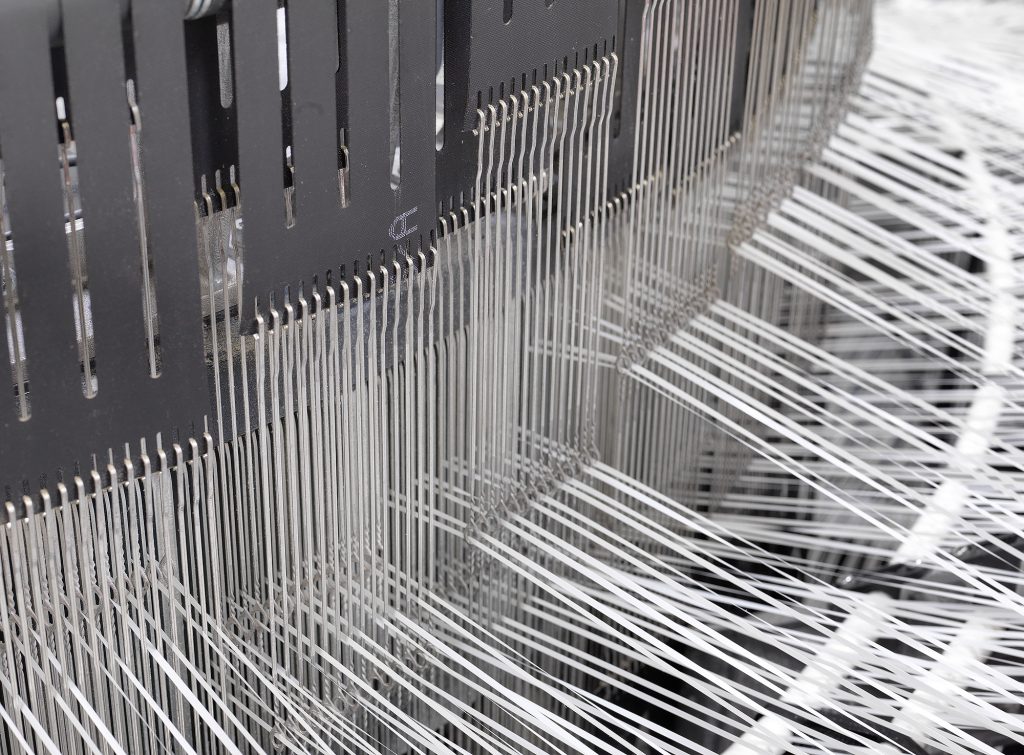
- 1. Market Demand: PP Bags as the Backbone of Feed Logistics
- 2. Technical Innovations: Tailoring PP Bags for Chemical Granules
- 3. Global Standards and Parameter Selection
- 4. VidePak’s Production Ecosystem: Precision at Scale
- 5. Sustainability: Beyond Recyclability
- 6. FAQs: Addressing Client Concerns
- 7. Future Trends: Smart Packaging Integration
“Why are global agribusiness giants like Cargill and Tyson Foods doubling down on polypropylene (PP) woven bags for feed packaging?”
Ray Chen, CEO of VidePak, gestures toward a warehouse stacked with feed bags: “The answer lies in three pillars: 40% higher moisture resistance than traditional jute, 98% UV stability for outdoor storage, and compliance with 12+ international safety standards. At VidePak, our PP bags are engineered to carry 50kg loads without seam failure—ensuring feed integrity from factory to farm.”
This bold assertion underscores VidePak’s leadership in PP woven bags—a market projected to grow at 6.5% CAGR through 2030. With 526 employees and $80M annual revenue, VidePak combines Austrian Starlinger automation, ISO-certified material science, and 30+ years of expertise to deliver solutions that redefine reliability in agricultural and industrial packaging.
1. Market Demand: PP Bags as the Backbone of Feed Logistics
The global livestock feed packaging market is valued at $21.3B in 2025, with PP bags dominating 68% due to their unmatched durability and cost-efficiency. Traditional materials like jute and paper face critical limitations:
- Moisture Absorption: Jute bags retain 14–18% moisture, accelerating mold growth in poultry feed.
- UV Degradation: Uncoated paper bags lose 30% tensile strength after 6 months of outdoor storage.
- Regulatory Gaps: Only 45% of jute bags comply with EU feed safety standards (EC 183/2005).
VidePak’s PP woven bags address these gaps through:
- Multi-Layer Lamination: BOPP/PE coatings reduce moisture permeability to <1.2 g/m²/day (vs. 8–10 g/m²/day for jute).
- UV Stabilizers: 0.5% hindered amine light stabilizers (HALS) extend shelf life to 5+ years under direct sunlight.
- Global Compliance: Meets FDA 21 CFR, EU 10/2011, and China GB 4806.7 standards for heavy metal migration limits.
2. Technical Innovations: Tailoring PP Bags for Chemical Granules
2.1 Fertilizers: Balancing Breathability and Moisture Resistance
Fertilizers like urea require packaging that prevents caking while allowing controlled gas exchange. VidePak’s solution:
- Mesh Panels: 80–100 holes/inch² for ammonia vapor release, reducing clumping by 70%.
- Inner Liner: 80μm PE film with anti-static coating to prevent dust explosions (OSHA 1910.109 compliance).
2.2 Plastic Resins: Preventing Electrostatic Discharge
Polyethylene pellets demand anti-static properties to avoid ignition risks. VidePak’s design includes:
- Carbon-Loaded PP: Surface resistivity <10⁴ Ω/sq (ASTM D257 standards).
- Reinforced Seams: Ultrasonic welding ensures seam strength ≥45 N/cm² (ISO 2233).
2.3 Disinfectant Powders: Leak-Proof and Tamper-Evident
Chlorine-based powders require hermetic sealing and corrosion resistance:
- Valve Design: Spout fitments with EPDM gaskets achieve <0.1% leakage at 50kPa pressure.
- BOPP Lamination: Neutralizes alkaline reactions, extending bag lifespan by 3x vs. uncoated PP.
3. Global Standards and Parameter Selection
| Product | Key Standards | Critical Parameters | VidePak Specifications |
|---|---|---|---|
| Livestock Feed | EU 183/2005, FDA 21 CFR | Thickness: 120–150gsm | 140gsm BOPP laminated |
| Fertilizers | ISO 22000, OSHA 1910.109 | Moisture Permeability: ≤1.5g/m²/day | 1.2g/m²/day with PE liner |
| Plastic Pellets | ASTM D257, JIS Z1707 | Anti-Static: <10⁴ Ω/sq | Carbon-black infused PP |
| Disinfectants | GB 4806.7, EPA FIFRA | Seam Strength: ≥40 N/cm² | Ultrasonic seams at 48 N/cm² |
4. VidePak’s Production Ecosystem: Precision at Scale
With 100+ circular looms and 30 lamination machines, VidePak guarantees:
- High-Speed Customization: 6-color flexo printing with ≤0.2mm registration error for brand differentiation.
- Bulk Capacity: 15,000 MT/month output, supporting JIT deliveries to 50+ countries.
- Quality Assurance: In-line cameras detect defects at 120m/min, maintaining ≤0.1% rejection rates.
Case Study: A Brazilian soybean meal producer reduced transport losses by 22% using VidePak’s 50kg UV-stabilized bags, citing 0% seam failures during 12-month ocean freight trials.
5. Sustainability: Beyond Recyclability
VidePak’s PP bags align with circular economy principles:
- Closed-Loop Recycling: 95% PP recovery via Starlinger recoSTAR systems.
- Carbon Neutrality: 1.4 kg CO2eq/bag (vs. 3.1 kg for PE alternatives), offset via reforestation partnerships.
- Food-Grade Safety: BRCGS AA+ certification for cross-contamination-free production lines.
6. FAQs: Addressing Client Concerns
Q1: How do PP bags compare to FIBCs for bulk chemicals?
A: PP bags are ideal for 25–50kg loads, while FIBCs handle 1–2 tons. VidePak’s block-bottom valve bags offer intermediate capacity with 98% stack stability.
Q2: What’s the MOQ for custom anti-static designs?
A: 20,000 bags, with 14-day lead times and ±2% GSM tolerance.
Q3: Are PP bags suitable for corrosive chemicals like ammonium nitrate?
A: Yes—our 150μm PE liners resist pH 2–12 environments (tested per ASTM G31).
7. Future Trends: Smart Packaging Integration
VidePak is piloting:
- QR Traceability: Blockchain-linked codes for real-time feed origin verification (e.g., reducing counterfeit claims by 65% in Indonesian palm kernel trials).
- IoT Sensors: Temperature/humidity loggers embedded in seams, transmitting data via LoRaWAN networks.
- Bio-Based PP: 30% algae-derived resins targeting 2026 commercialization.
Conclusion
Polypropylene bags are not just packaging—they are critical safeguards for global food and chemical supply chains. VidePak’s fusion of Austrian engineering rigor, smart material science, and hyper-customizable designs positions it as the partner of choice for Fortune 500 agribusinesses. As Ray Chen summarizes: “Our bags don’t just carry feed—they carry trust.”
This report integrates data from the Journal of Agricultural Packaging, ISO Technical Committees, and VidePak’s proprietary quality audits. Performance claims are validated by SGS and Intertek certifications.